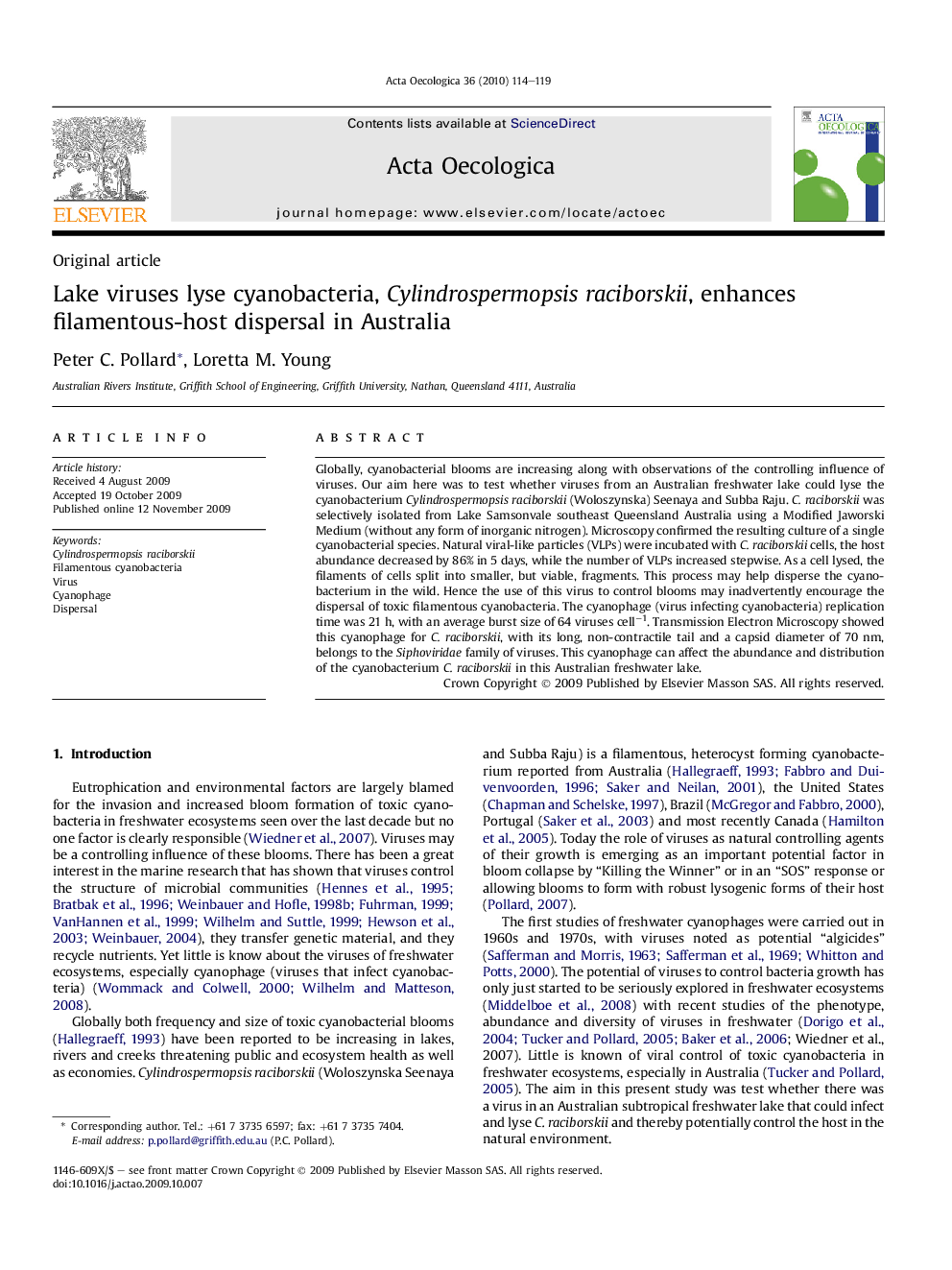| Article ID | Journal | Published Year | Pages | File Type |
|---|---|---|---|---|
| 4381466 | Acta Oecologica | 2010 | 6 Pages |
Globally, cyanobacterial blooms are increasing along with observations of the controlling influence of viruses. Our aim here was to test whether viruses from an Australian freshwater lake could lyse the cyanobacterium Cylindrospermopsis raciborskii (Woloszynska) Seenaya and Subba Raju. C. raciborskii was selectively isolated from Lake Samsonvale southeast Queensland Australia using a Modified Jaworski Medium (without any form of inorganic nitrogen). Microscopy confirmed the resulting culture of a single cyanobacterial species. Natural viral-like particles (VLPs) were incubated with C. raciborskii cells, the host abundance decreased by 86% in 5 days, while the number of VLPs increased stepwise. As a cell lysed, the filaments of cells split into smaller, but viable, fragments. This process may help disperse the cyanobacterium in the wild. Hence the use of this virus to control blooms may inadvertently encourage the dispersal of toxic filamentous cyanobacteria. The cyanophage (virus infecting cyanobacteria) replication time was 21 h, with an average burst size of 64 viruses cell−1. Transmission Electron Microscopy showed this cyanophage for C. raciborskii, with its long, non-contractile tail and a capsid diameter of 70 nm, belongs to the Siphoviridae family of viruses. This cyanophage can affect the abundance and distribution of the cyanobacterium C. raciborskii in this Australian freshwater lake.
